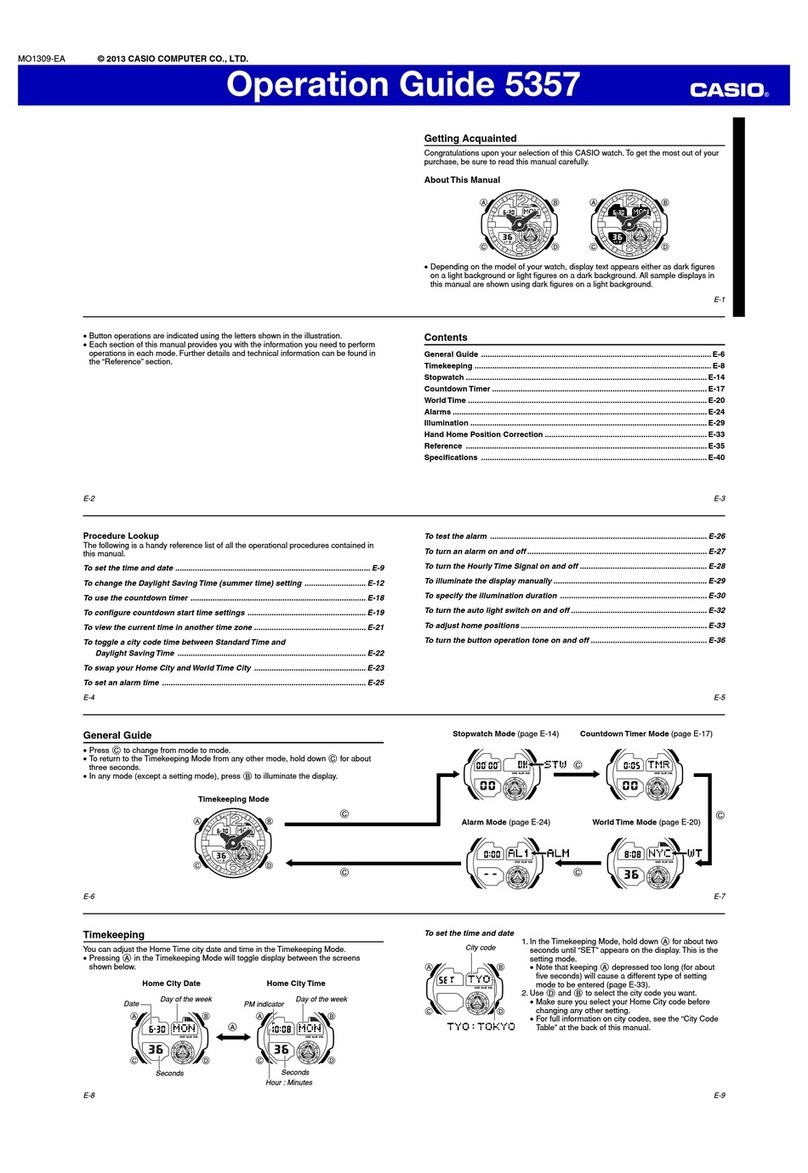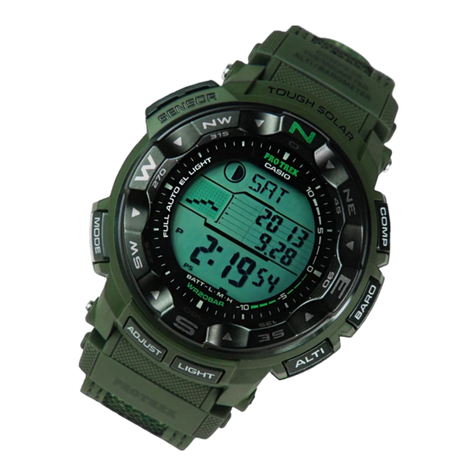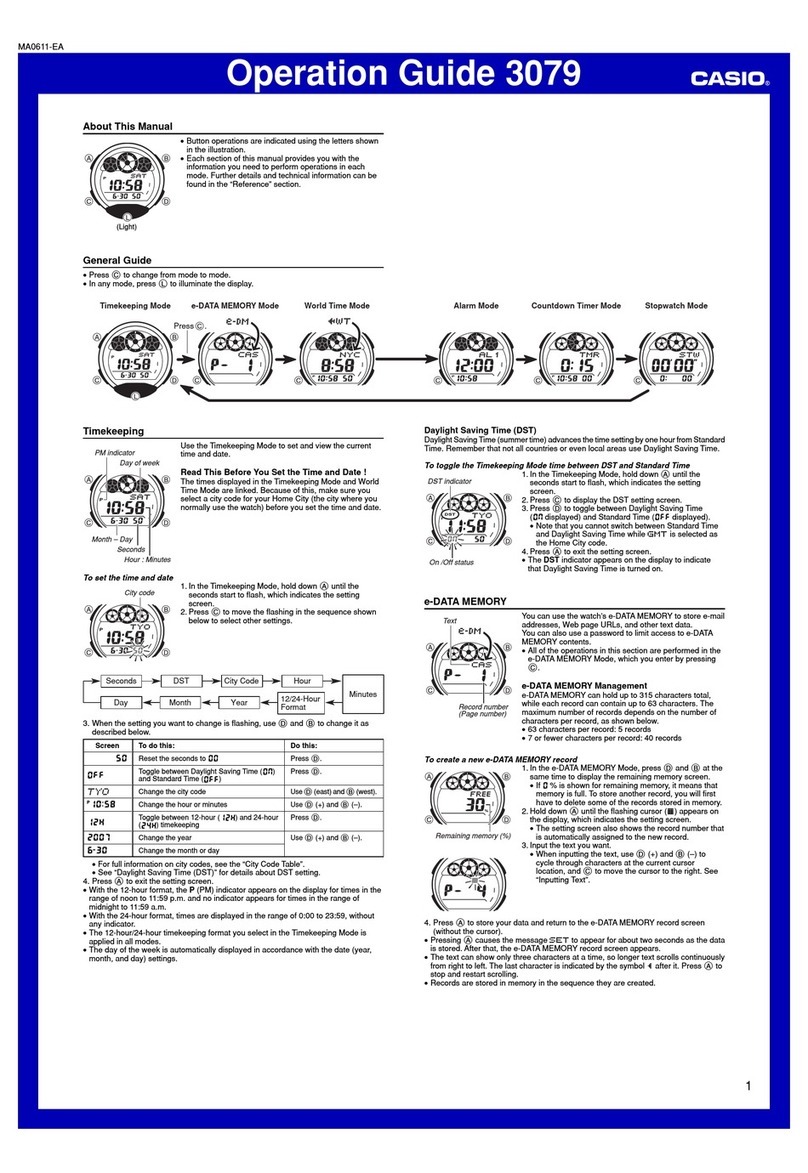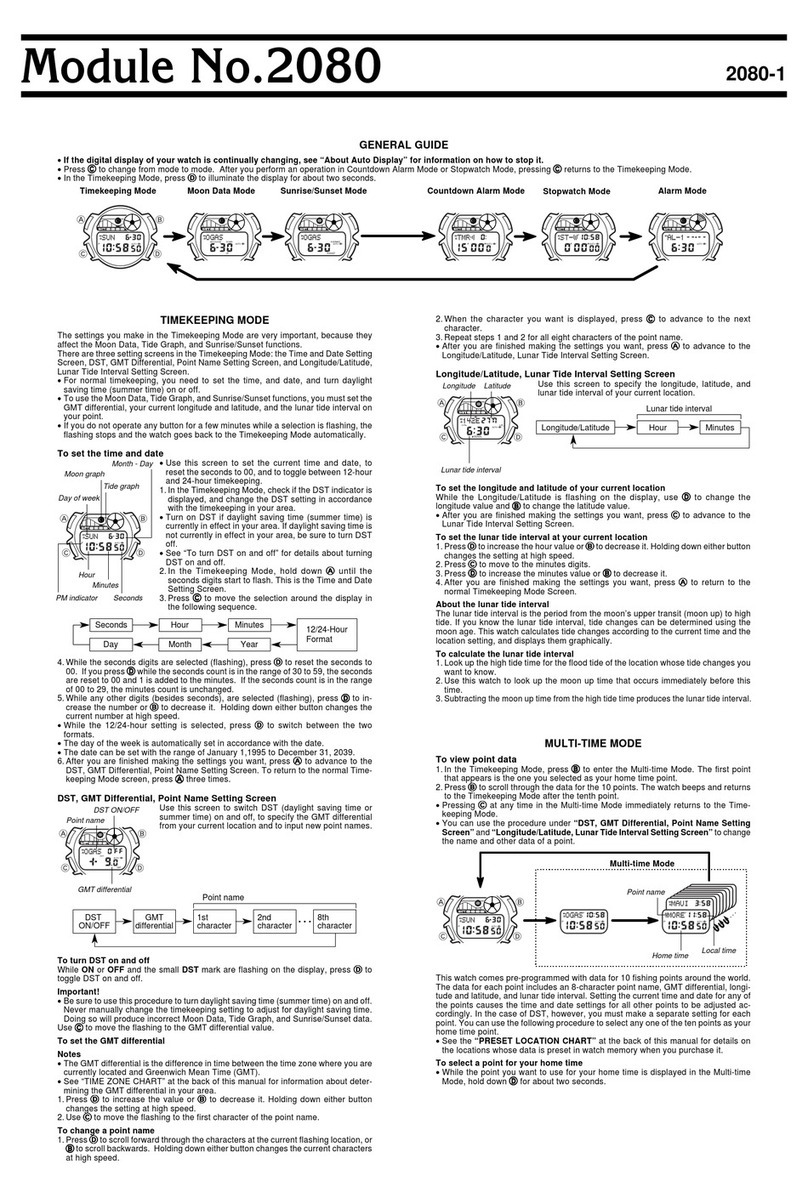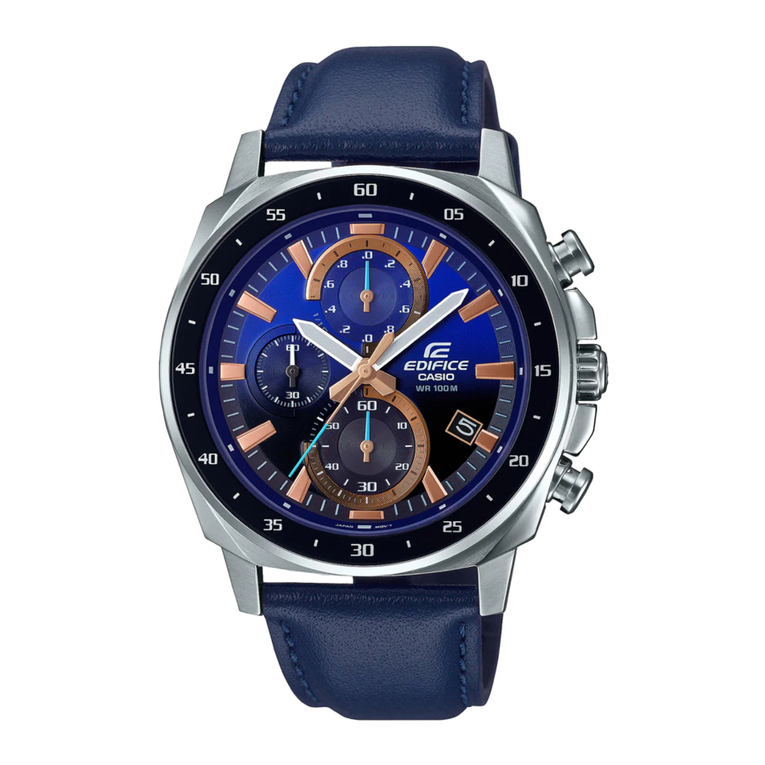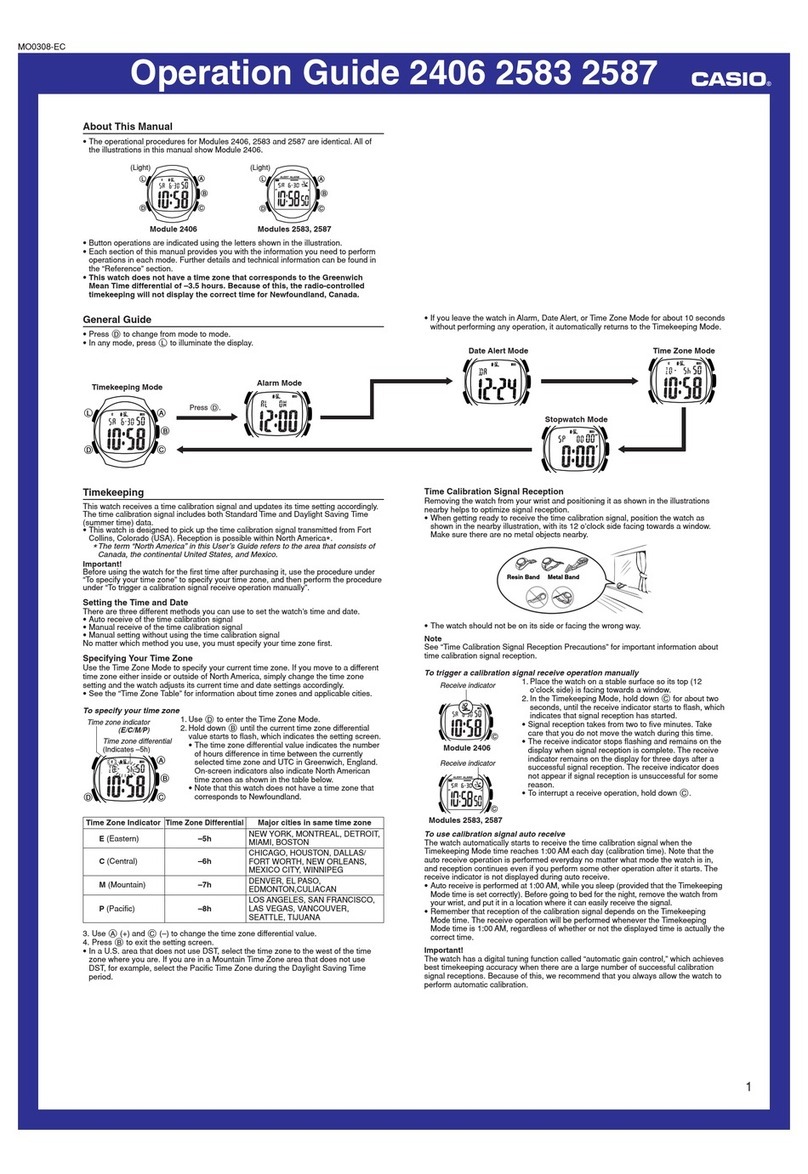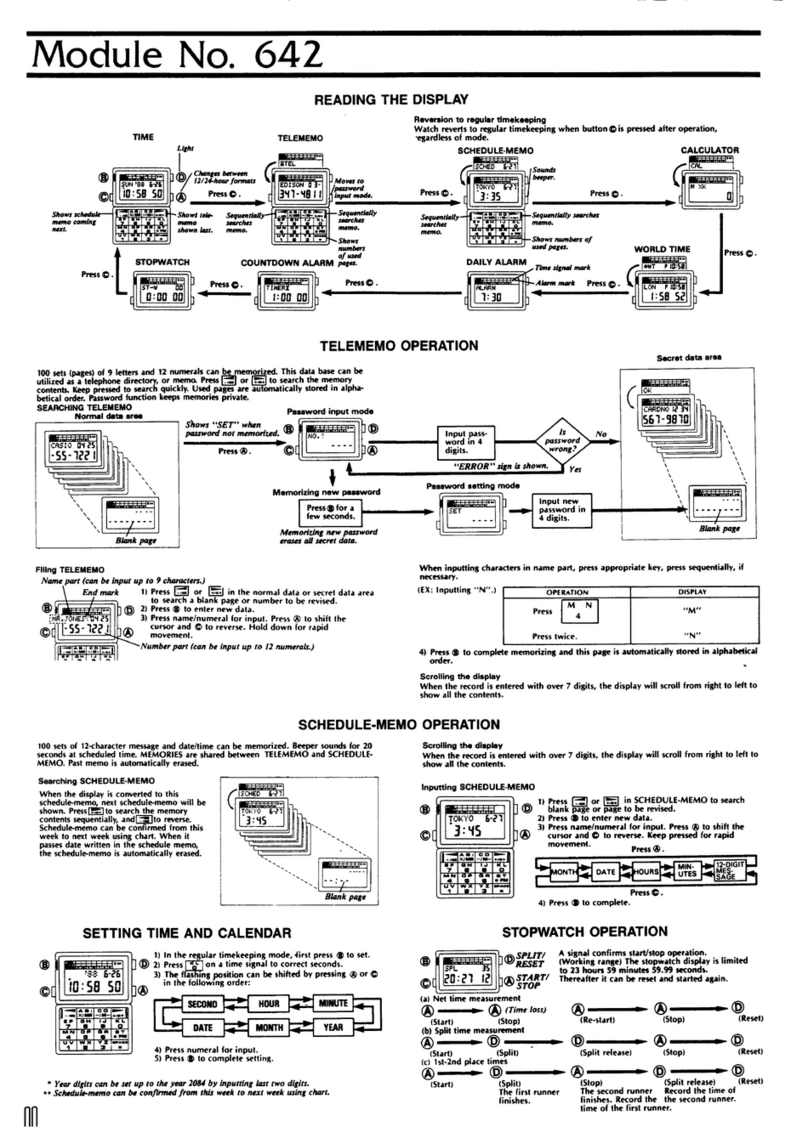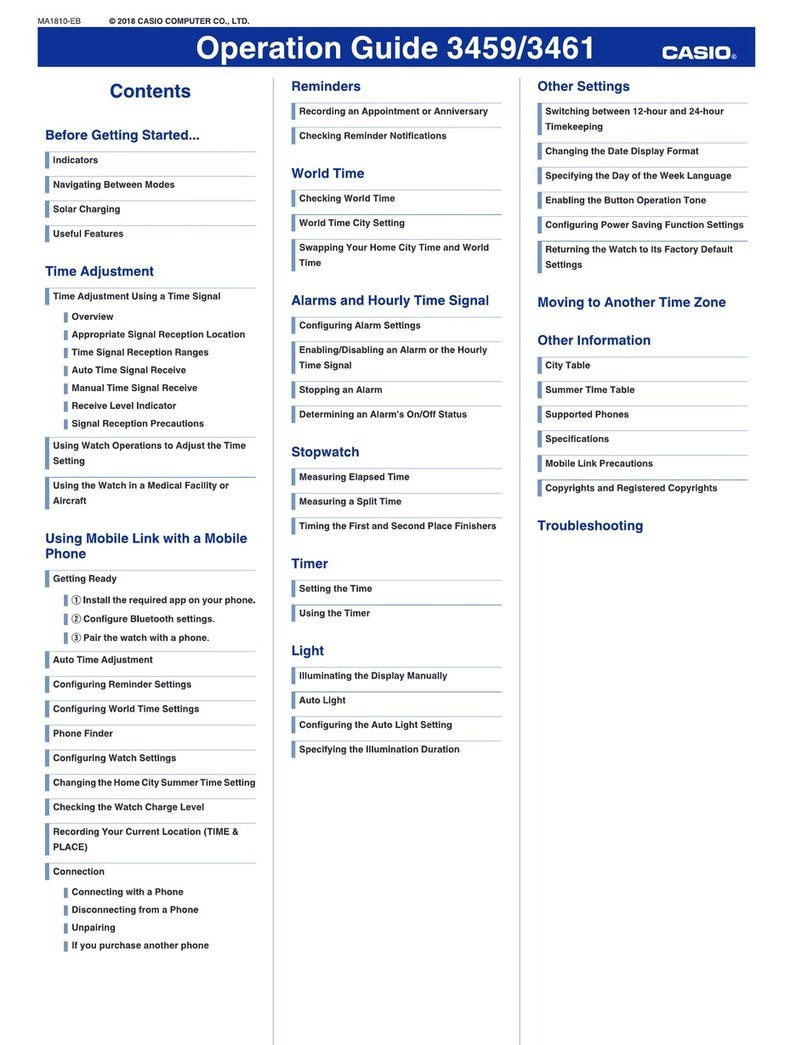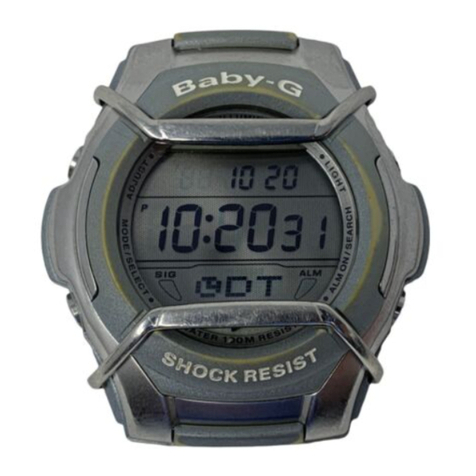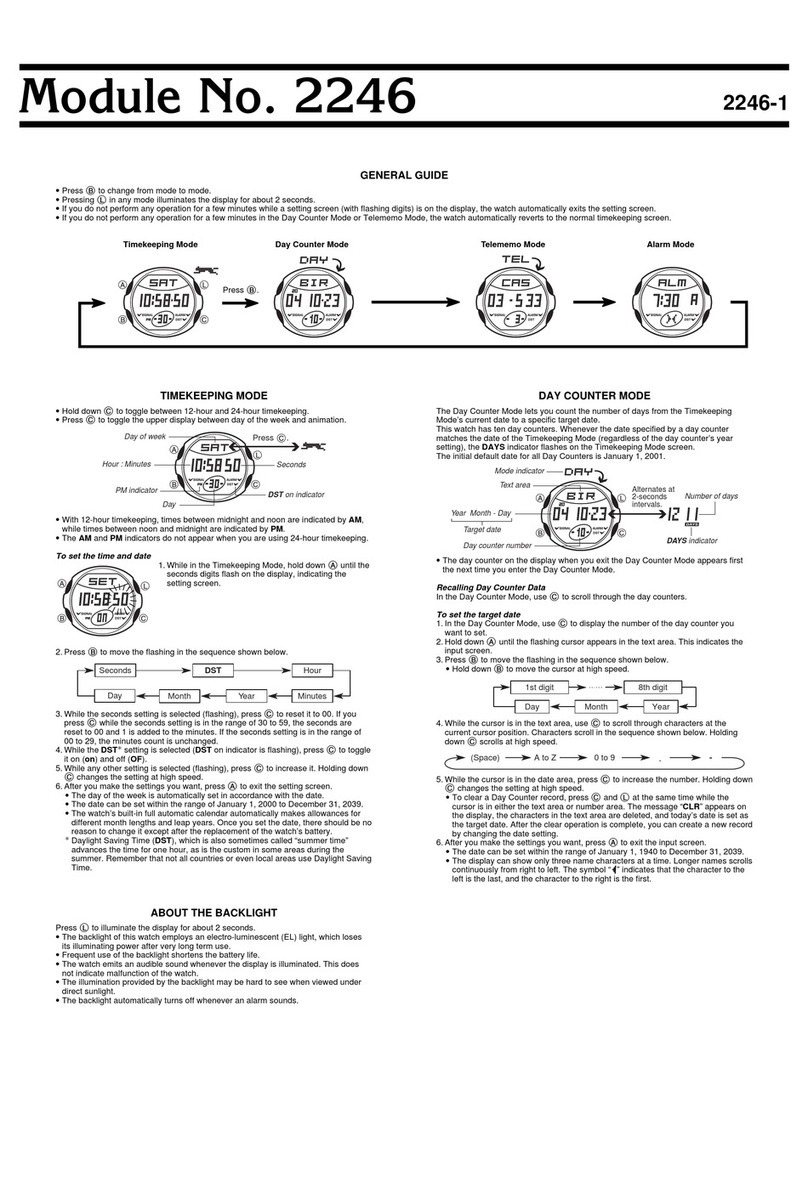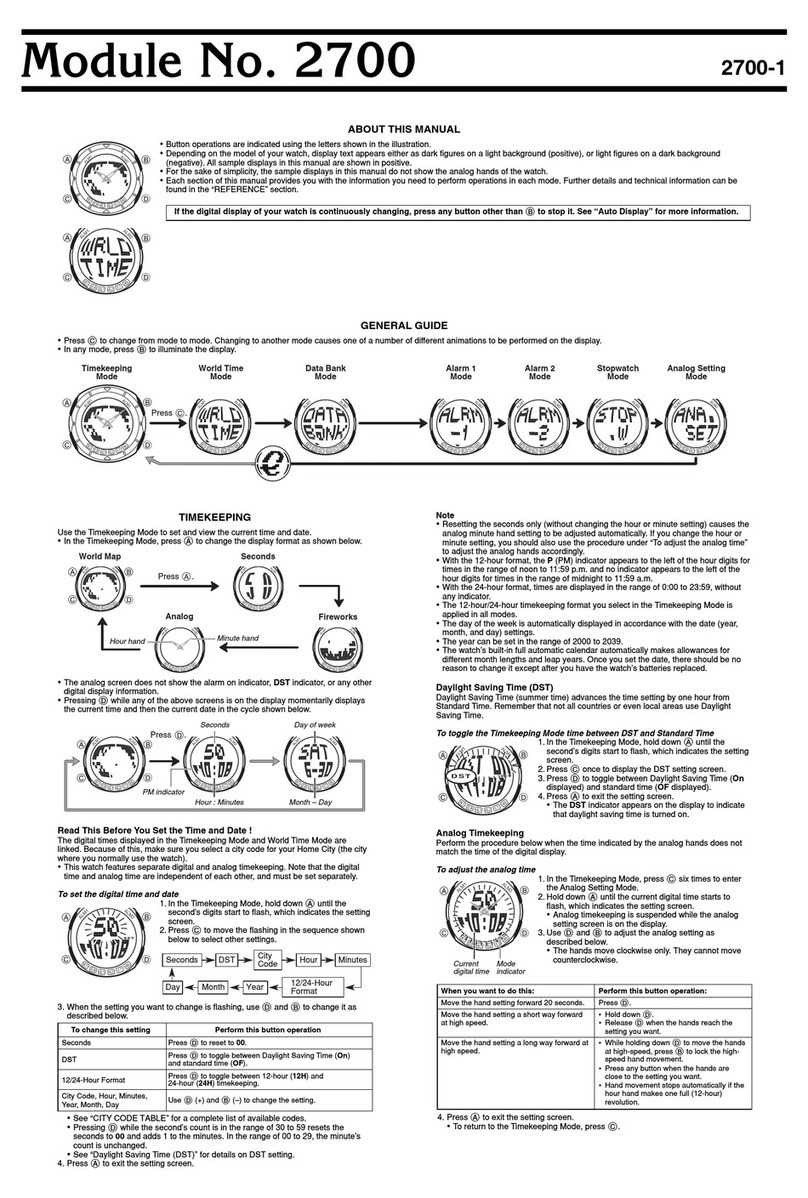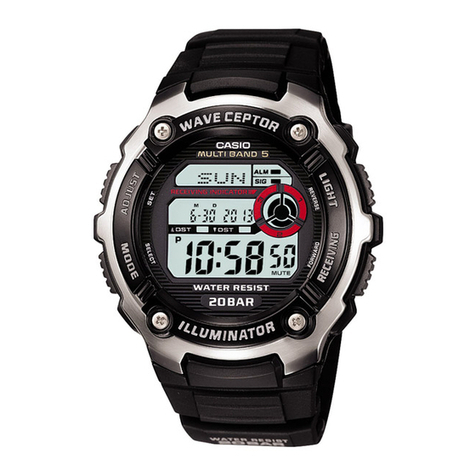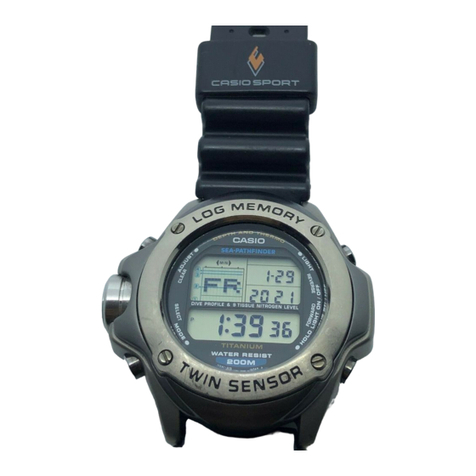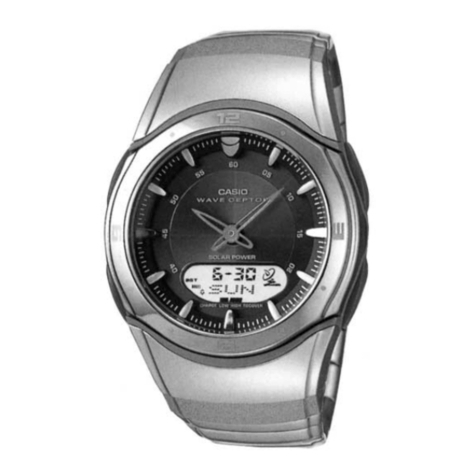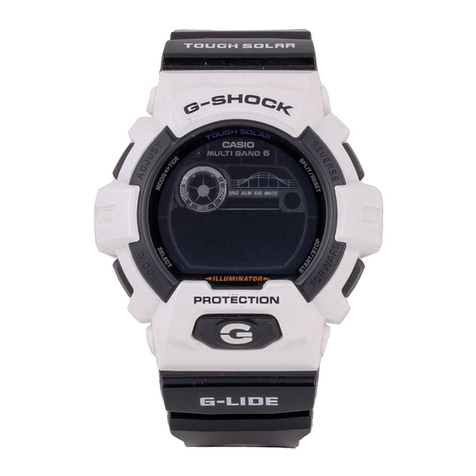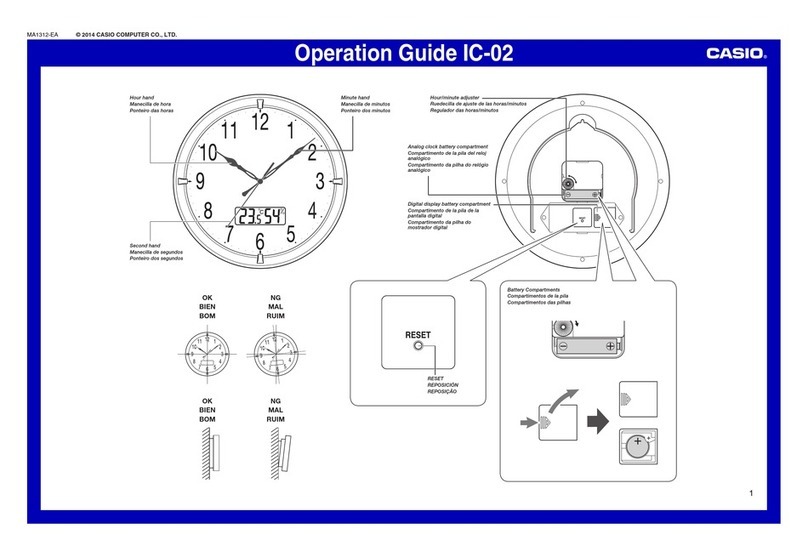
2307/2335-6
BATTERY REPLACEMENT
ALWAYS LEAVE BATTERY REPLACEMENT UP TO THE DEALER
WHERE YOU BOUGHT THE WATCH OR TO AN AUTHORIZED CASIO
DISTRIBUTOR. BE SURE TO SHOW THE FOLLOWING INFORMATION
TO THE PERSON REPLACING THE BATTERY.
Attention dealer or CASIO distributor
Be sure to use the following procedure when replacing the battery.
1. Remove the back cover screws, and then remove the back cover.
2. Pull up the battery holder.
3. Remove the old battery and load a new one.
4. Close the battery holder.
5. Touch the AC contact and the battery (+) side with metallic tweezers.
6. Replace the back cover and secure it with the screws.
7. Check the display of the watch. If the message “OPEn”is on the display, it
means the back cover is not closed correctly. Remove the back cover and
carefully replace it again.
* Absence of the “OPEn”message does not necessarily indicate an air-tight
seal.
Other tests are required to check for air tightness.
WARNING INDICATORS
This watch displays warning indicators to let you know when the sensor is
malfunctioning and when battery power is low.
Err Display – Sensor Malfunction Warning
This message indicates malfunction of the watch’s pressure sensor circuitry.
When sensor malfunction initially occurs, the watch stops taking
measurements, the “Err”message appears, and a buzzer sounds for about
three seconds.
•If the sensor is malfunctioning when it comes time for a barometric pressure
measurement to be taken, the barometric pressure value and altitude value
appears as “– –––” on the display and the corresponding point on the
barometric pressure graph is left blank.
•Whenever there is a sensor malfunction, be sure to take the watch to an
authorized CASIO distributor or Service Center as soon as possible.
Alteration of and Graph – Temporary Low Power
Warning
Temporary low power is indicated on the display when the battery level
temporarily drops below a certain level.
•Sensors are disabled while the temporary low power warning is being
indicated, but the light and tones are operational.
•Very low temperature can cause the low power warning to appear even
though battery power is not low. The low power warning should disappear
when the watch is restored to normal temperature.
•If the low power warning appears under normal temperature, replace the
battery as soon as possible.
Alteration of and – Battery Usage Warning
The watch automatically monitors your use of certain high battery drain
functions. The battery usage warning display appears whenever the watch
determines that your use of these functions is putting a heavy load on the
battery.
•Sensors, the light, and tones are disabled while the battery usage warning
is on the display.
•The following are the trigger values for the functions that are monitored for
battery usage.
Light: 100 Sensor Operations: 1,000
Alarm: 100 Mode Change: 1,000
•The battery usage warning appears whenever any single function is
performed the number of times noted above, or for any proportional number
of operations of multiple functions (such as 50 light operations and 50 alarm
operations, 50 light operations and 500 mode change operations, etc.).
•The monitor counter continues to be incremented as long as the duration
between two high power drain operations is less than 15 minutes. The
counter is reset to 0 whenever 15 minutes pass between operations.
Display – Low Power Warning
The low power warning appears to let you know that battery power is low.
•Sensors, the light, and tones are disabled while the low power warning is on
the display.
•The low power warning may appear under very low temperatures, although
battery power is not low. Correct operation should resume when the watch
returns to normal temperature.
•If the low power warning appears under normal temperatures, have the
watch’s battery replaced as soon as possible.
•Be sure to read “Battery Replacement”before trying to replace the battery.
ABOUT ALTITUDE AND BAROMETRIC
PRESSURE MEASUREMENTS
Altimeter
Generally, barometric pressure and temperature decrease as altitude
increases. This watch bases its altitude measurements on International
Standard Atmosphere (ISA) values stipulated by the International Civil
Aviation Organization (ICAO), which define relationships between altitude,
barometric pressure, and temperature.
0 ft 2000 ft
4000 ft
6000 ft
8000 ft
10000 ft
12000 ft
14000 ft
16000 ft
18000 ft
20000 ft
25.84 inHg
22.23 inHg
19.03 inHg
16.22 inHg
13.76 inHg
44.7°F
30.5°F
16.2°F
2.0°F
–12.2°F
59.0°F29.92 inHg
About 3.6°F
per 1000 ft
About 0.119 inHg per 200 ft
About 0.1315 inHg per 200 ft
About 0.15 inHg per 200 ft
About 0.17 inHg per 200 ft
About 0.192 inHg per 200 ft
About 0.21 inHg per 200 ft
ALTITUDE TEMPERATURE
Source: International Civil Aviation Organization
BAROMETRIC PRESSURE
540 hPa/mb
616 hPa/mb
701 hPa/mb
795 hPa/mb
899 hPa/mb
1013 hPa/mb
472 hPa/mb
0 m 500 m
1000 m
1500 m
2000 m
2500 m
3000 m
3500 m
4000 m
4500 m
5000 m
5500 m
6000 m
8.5°C
2°C
–4.5°C
–11°C
–17.5°C
–24°C
15°C
About 6.5°C
per 1000 m
About 6.7 hPa/mb per 100 m
About 7 hPa/mb per 100 m
About 8 hPa/mb per 100 m
About 9 hPa/mb per 100 m
About 10 hPa/mb per 100 m
About 11 hPa/mb per 100 m
About 12 hPa/mb per 100 m
ALTITUDE BAROMETRIC PRESSURE TEMPERATURE
Source: International Civil Aviation Organization
There are two standard methods of expressing altitude: Absolute altitude and
relative altitude. Absolute altitude expresses an absolute height above sea
level. Relative altitude expresses the difference between the height of two
different places.
Barometer
Barometric pressure indicates changes in the atmosphere, and by monitoring
these changes you can predict the weather with reasonable accuracy. Rising
barometric pressure indicates good weather, while falling pressure indicates
deteriorating weather conditions.
The barometric pressures that you see in the newspaper and on the TV
weather report are measurements corrected to values measured at 0 m sea
level.
Height of building 130 m
(Relative altitude)
Rooftop at an altitude of
230 m above sea level
(Altitude above sea level)
Sea

